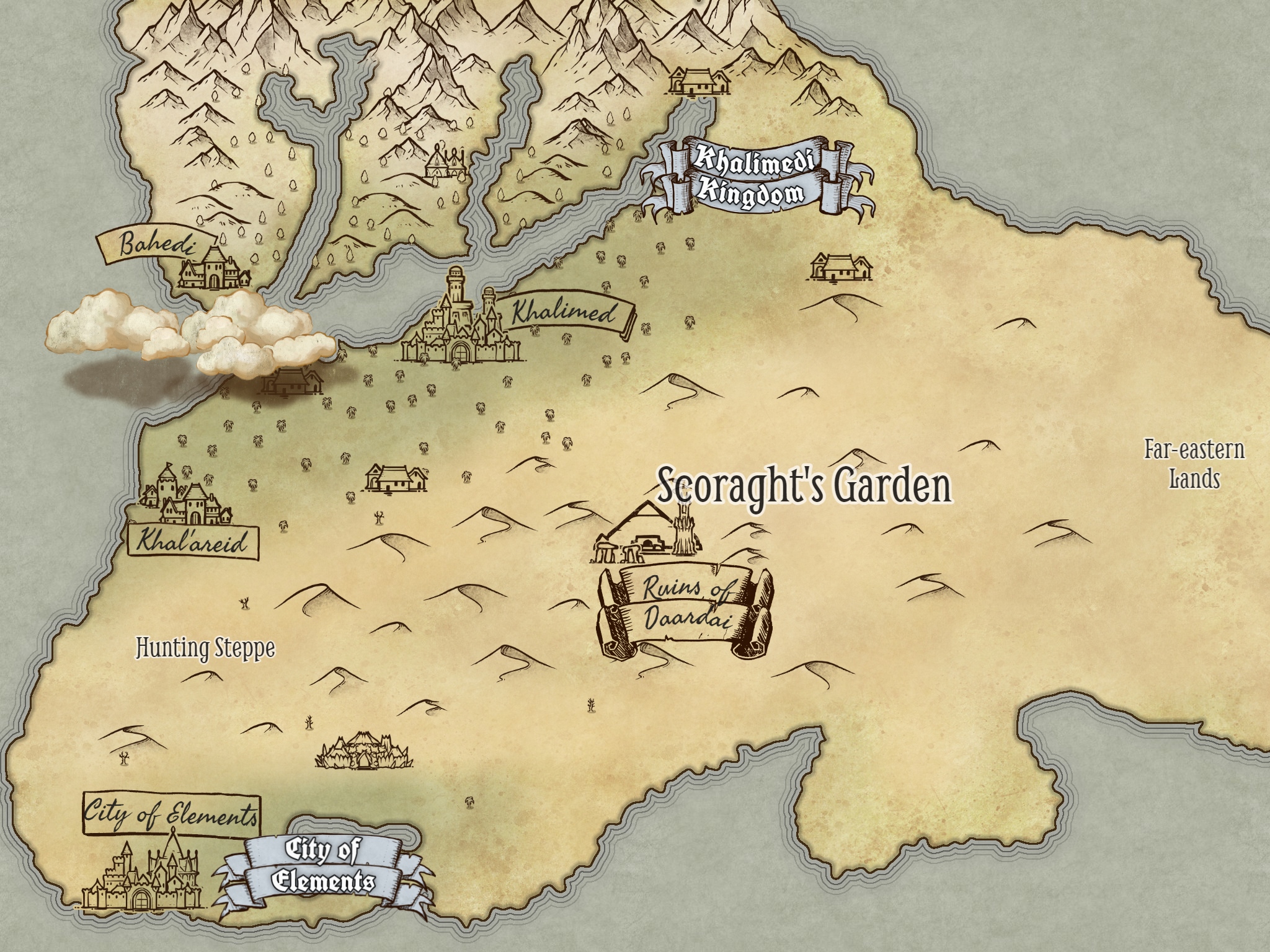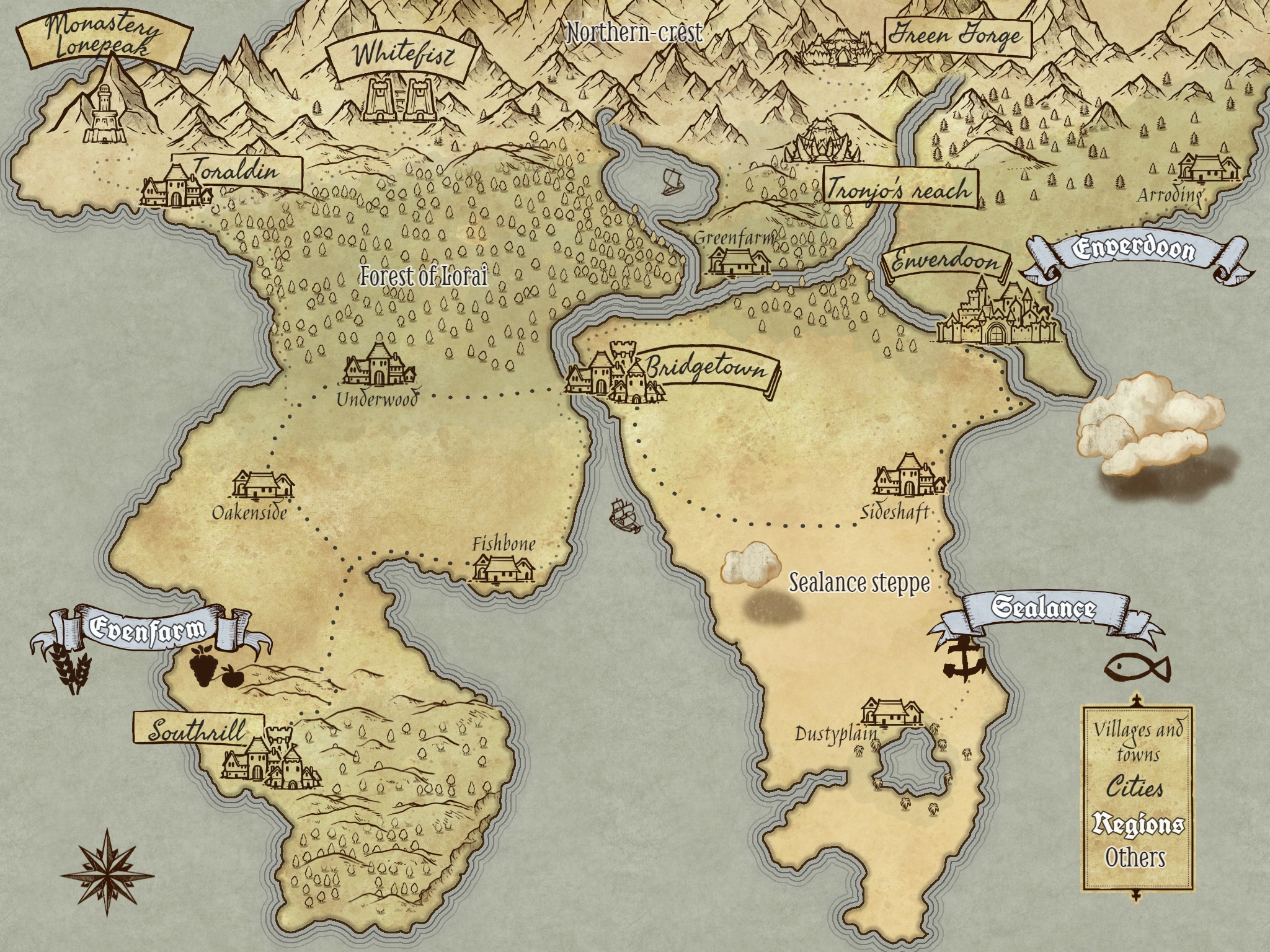Luciera
Lady of Light (a.k.a. Lady of Light; Bright Lady)
Luciera is one of the deities originated in The First Plethora and one of Daardeonkar's Children. The goddess of Light and Colors, also called the Lady of Light, is one of the most respected deities of the Western-Humans culture and Whitefist. Her importance is significantly smaller in the eastern continent, where the light of the sun is seen in a less positive, if not explicitly negative, way. In the City of Elements she is reduced to being a minor god, with the main pantheon being dominated by the deities of elements.
Divine Domains
Luciera is the order goddess of Light and thus the most common deity of good-aligned light clerics of every race and culture. Depending on different geographical locations and cultures, this goddess can be the patron of different clerics.
Luciera's chaotic counterpart is Scoragh.
- In Western-Humans culture, where sunlight has a positive connotation, being for example associated with flourishing crops, protection from darkness and warmth in cold winters, Luciera is also one of the main deities of the Life Domain.
In the Enverdoon Kingdom Luciera is the most popular goddess between commoners and her temples are also the places where the sick and wounded are tended to. In this human kingdom, every single settlement, no matter how small, has a temple of Luciera and at least one priest. Because of this healing function, Luciera is also associated with the Peace Domain. - In Whitefist the Lady of Light is in a lesser extent also associated with the Life Domain, somewhat also thanks to the influence of the neighboring human countries.
- In most of the Eastern Continent, Luciera is not worshipped extensively, and the few temples dedicated to her can usually be found in large, multicultural cities often visited by westerners, like Khalimed.
Luciera's chaotic counterpart is Scoragh.
Divine Symbols & Sigils
Within the common pantheon, Luciera is one of the deities whose sacred symbol has remained the same throughout the ages. In every culture the main symbol of the Lady of Light is a pyramid with either seven rays coming out of it or a crown with seven points. This symbol depicts the moment when the The Breach of Chaos opened in the sky above the original Mountain, the pyramid, and light entered the world together with the colors of the rainbow, the seven rays or the seven-pointed crown.
Depending on the culture, humanoid representations of Luciera can have different physical appearance, with the common characteristic of being female.
Humans and genasi picture her as either a human or, more often, halfling woman (halflings being known as generally peaceful and quiet, and their communities often revolving around helping each other), and with dwarves they all imagine her blonde. Shifters of the Western Atoll and orcs have her bald, and of their respective race. She is often depicted smiling in a nurturing way.
Symbols of the clerics of Luciera are gold or golden colored disks, candles and torches.
Holy Garments
Clerics of Luciera wear simple knee-long tunics of cotton, linen or wool, closed at the waits by leather belts or plain pieces of rope. The elbow-long sleeves simplify movement as well as handling of patients and alchemical elements.
More official garments worn when not working or tending the sick consist in ankle long white robes with long and large sleeves. Pendants carrying the symbols of the goddess are worn in the front.
Temples
Temples vary highly depending on the influence of local culture and architecture, as well as climate and materials availability. However, there are some common shared characteristics.
Luciera's temples often have pyramidal shapes, whether in the whole building or the roof, and have windows and glass panels allowing sunlight on the shrine's altar throughout the whole day. This holds true especially for temples in the Western Continent, less so in the Eastern Continent.
Depending on the culture, humanoid representations of Luciera can have different physical appearance, with the common characteristic of being female.
Humans and genasi picture her as either a human or, more often, halfling woman (halflings being known as generally peaceful and quiet, and their communities often revolving around helping each other), and with dwarves they all imagine her blonde. Shifters of the Western Atoll and orcs have her bald, and of their respective race. She is often depicted smiling in a nurturing way.
Symbols of the clerics of Luciera are gold or golden colored disks, candles and torches.
Holy Garments
Clerics of Luciera wear simple knee-long tunics of cotton, linen or wool, closed at the waits by leather belts or plain pieces of rope. The elbow-long sleeves simplify movement as well as handling of patients and alchemical elements.
More official garments worn when not working or tending the sick consist in ankle long white robes with long and large sleeves. Pendants carrying the symbols of the goddess are worn in the front.
Temples
Temples vary highly depending on the influence of local culture and architecture, as well as climate and materials availability. However, there are some common shared characteristics.
Luciera's temples often have pyramidal shapes, whether in the whole building or the roof, and have windows and glass panels allowing sunlight on the shrine's altar throughout the whole day. This holds true especially for temples in the Western Continent, less so in the Eastern Continent.
Remove these ads. Join the Worldbuilders Guild





Comments